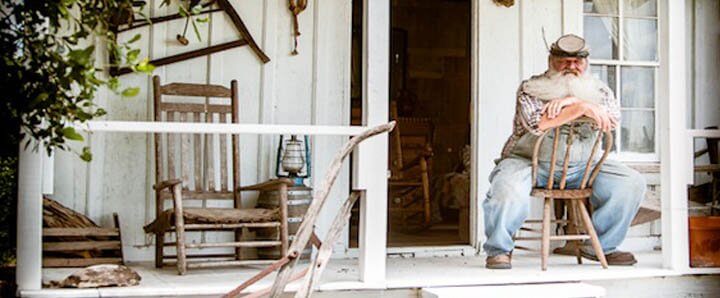1890s Davis Victorian Complex
Explore the waning days of the 19th century in the Victorian splendor of the Davis Complex. Learn about the third generation of the family at the Davis Mansion and then complete your tour by visiting the sharecropper farm and working blacksmith shop.
- The Davis House: Get a feel for the very proper Victorian era by touring the elegant Davis House. This beautiful home depicts a prosperous lifestyle in the 1890s, and is a favorite of visitors of all ages.
- The Original Family Cemetery: The family cemetery was established in the 1820s with the last burial in 1916. Many of the later generations of the family are buried in historic Morton Cemetery in Richmond.
- Oldenburg Blacksmith: Learn the importance of the blacksmith trade as you watch craftsmen at work. Following tradition, the blacksmith makes most of the simple metal tools and equipment needed on the Ranch today. View photos of our working Blacksmith Shop.
- The Sharecropper’s Farm: Step into the daily life of a working Sharecropper farm in the era after the Civil War. Learn how freed slaves and displaced soldiers survived by engaging in this often unfair system of tenant farming. Learn more about the Sharecropper Farm.
- Line Camp: Visit this rustic shelter used by the ranch cowboys to take refuge during the night while riding the extensive property lines. Learn how the cattle industry was forever changed when the open range was enclosed with barbed wire fencing.
- The Rail Car and Longhorn Pens: Explore an exhibit that presents the ways cattle were moved to market from this part of Texas … some went by trails, some by rails and even some by sails. A group of ranch raised Longhorns are in an adjacent pasture.
Davis Family History
In 1875, Susan Elizabeth, Polly’s eldest surviving daughter, would marry local banker “Judge” John Harris Pickens Davis. This marriage would propel the third generation of the family story through triumph and heartbreak in a rapidly changing Texas as it hurtled towards the 20th century. Judge Davis was a banker, entrepreneur and civic leader who helped organize the Richmond Cotton Company, Richmond Electric Company and the Richmond [Cotton] Gin Company. Although Polly continued to build the cattle operation until 1886, she turned the ranch’s assets, more than 27,000 acres and 8,000 head of cattle, over to her son-in-law to manage for the family. With the addition of family land held by Davis himself and Polly’s brother, T.W. Jones, the combined holdings of the family including owned and leased land was 67,668 acres which was roughly 12% of the total area of Fort Bend County. Polly’s daughter, Susan gave birth to three children before she died in 1884. Judge Davis and Polly kept her memory alive throughout their lives and worked hard to leave a lasting legacy to Susan Elizabeth’s children.









